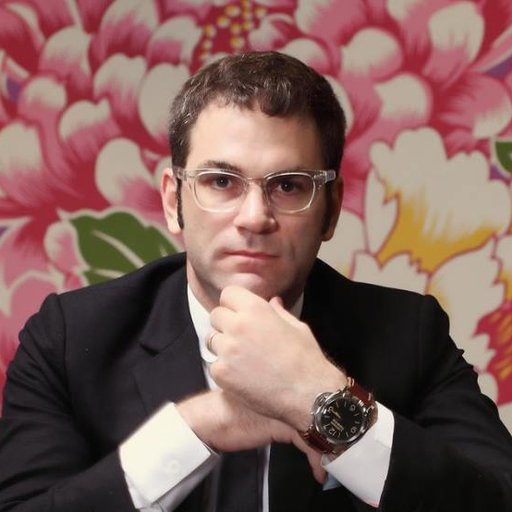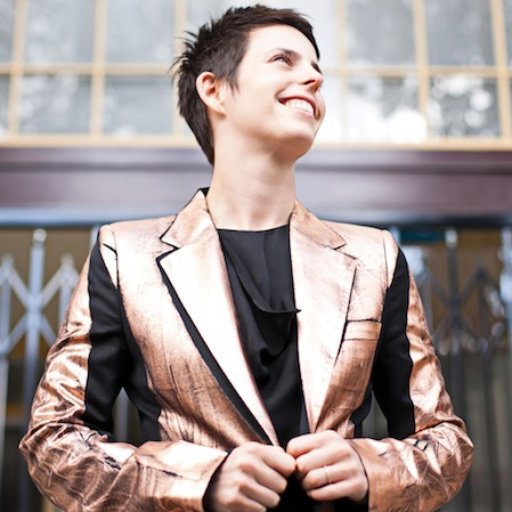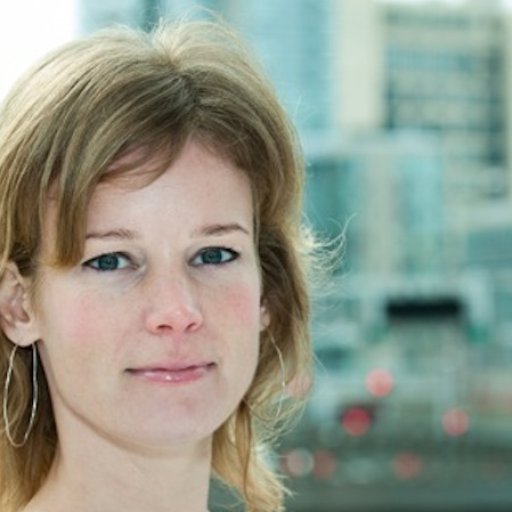As the youngest of the trio of curators helping this year's Whitney Biennial, Anthony Elms is also the one with the most concise presentation of work within the show—but what it lacks in numbers it makes up for in depth and conceptual heft. An associate curator at the ICA Philadelphia who also runs the underground artist publication organ White Walls, Elms has interests that run across disciplines, including performance (he is featuring many in the exhibition), literary pursuits, and that old chestnut, painting. Viewers, however, may walk away from his dedicated floor of the Biennial with a slightly more nuanced understanding of each.
Undergirding all the work on display on the second floor of the Breuer Building is a core conceit, which may or may not be so easy to discern: when putting together the show, Elms asked himself the same question posed by architect Marcel Breuer when building the Whitney's soon-to-be vacated home, "What should a museum look like, a museum in Manhattan." We spoke to the curator about some of the deeper themes embedded within his show, the ascent of the artist book, and why he believes in ghosts.
READ Q&S WITH THE OTHER CURATORS
Michelle Grabner On Her Unruly "Curriculum"
Stuart Comer On His Shapeshifting Presentation
This year’s biennial was an unusually collaborative enterprise with three curators determining what would be shown throughout the museum. What area of focus did you bring to the show?
It’s a difficult thing to answer, because I don’t know if any of us have a focus, per se—it's not like we split things up, with "you do this, and you do this." We all went on a lot of studio visits, and quickly, because you don’t have tons of time to work on the show. We brought stuff together that we're interested in seeing. But, in fact, there weren't very many overlaps on our lists, and in those couple of cases we would just ask each other, "How interested are you in so-and-so." But we're all interested in different artists, mostly, and our choices were driven out of the studio visits we were doing with people.
Just looking at the backgrounds of the three curators, you can tell that each has a different specialization, be it that Michelle Grabner is a painter herself who also teaches, and Stuart Comer is the head of MoMA's media and performance department. That didn't play into your decisions at all?
Well, it's not as Stuart was the only one who reached out to video artists—we're all working with lots of video artists. We're all working with people who perform, and we're all working with painters, we’ve all got sculptors. Obviously we were picked because we have different viewpoints and interests in different histories and traditions, but I didn’t think, "I’m not going to look at painting because Michelle is the most interested in painting." I wanted to bring in some painters who I think are the best, and who she’s not going to be picking. And Stuart and I are sharing the lobby gallery to present a series of performances that will trade of between us, since we have different performers coming in—in fact, I asked for most of the artists who will strictly be preforming. Then there's a screening room on the second floor that we'll all be sharing, trading off weeks so that we each get it for a month in total.
You have the smallest selection of artists in your show, with only 24 selected. How did that come about?
The funny thing is that in one of my early conversations with the Whitney I said that I would be surprised if I asked more than 25 artists, and so I found it pretty funny when I stopped just before 25 intuitively, since I was never doing any counting. But that's because I like being able to have in-depth conversations with people, and I knew that having in-depth conversation with more than 25 people would be too daunting. I also knew that I wanted to be able to plant more than one work by a person, so I wanted to keep the number down in order to be able to bring someone forward in a major way. That’s based from having done shows in other places and knowing the square footage of the museum.
Can you talk a bit about the 24 artists you chose?
Everyone I’m working with is someone I’ve been aware of for at least a year. There's one artist who is relatively new to me, but many of the other ones I have followed or known about for years. I was particularly interested in people who I felt had been overlooked, and that describes many on my list. On the other hand, there were just projects that I thought were great and I thought seemed important right now, or seemed different. Or projects that took a very difficult or new approach.
Can you mention some of the more difficult pieces?
Well, I guess I feel that Susan Howe and Jimmie Durham are not getting younger but are also still out there making major work that they are really invested in, so just representing them physically in the building was important. I also felt like they were people who personally have ties to that building, and it made sense to try and bring them into the building now that I have a chance to work in it. Marc Fischer [of Public Collectors] is someone who I have known for a long time, but has never presented his project in any sort of gallery or museum space to the public. When I reached out to him I didn't even know if he would want to do something in the Whitney—I just knew I was interested in how he reached out to wider groups of people to share things that are hard to share or are overlooked or often don’t get presented publicly. But I thought that leap of faith would be an interesting step, and after months of conversations he found a project that seemed heavy and large enough for the Biennial, and it’s the most in-depth presentation he has ever dealt with.
This archival tendency has been getting more and more pervasive in contemporary art, often taking on an activist shape. How do you see the archive functioning in contemporary art at the moment?
I actually think that there was a moment about ten years ago when there were tons of archive shows, and initially a lot of this was simply about showing archives, but now I guess we are getting to a point where it's getting more interesting, where the archive is starting to exist in a new way. You could say that three or four of the works in my show with have an archival element, or maybe even more depending on how you define it—but it’s a way that people are going beyond the archive, trying to present other people's ephemera and reenergize and re-enliven the materials. I think it’s a larger question than just about archives but about authorship, and how the ways that an author can construct a voice are becoming more complicated.
That sounds very contemporary in that so much online behavior has to do with putting together individual visions based on collections of things that people find on the Web, like with Pinterest.
Exactly—it's something we all do, only some of us do it with a more artistic focus.
You've been the editor and curator of White Walls for some time—could you talk a little about that?
It was originally a journal begun in 1977 by a poet, anarchist, and artist in Chicago who had the idea to create a publication related to conceptual artist books, so instead of articles and essays it would have text pieces by artists and publishing projects. The journal ran for a number of years and it did perfectly well, but then in the late 1990s distribution crumbled and it didn’t make sense to publish it anymore, so now we periodically do books and distribute the books through the University of Chicago Press. In a good year I might do four books; on a bad year I might do none. It’s a small process, but I’m happy with it.
There seems to be a profound literary bent to this biennial, with David Foster Wallace as the head-turning star inclusion, plus publishers like Semiotext(e) and Triple Canopy and a number of artists and poets who work with text. How did literary practices and publishing become such a pronounced part of the show?
I’ve been involved with publications and projects that involve ephemera and printed materials for years, Michelle is an adept and very experienced writer in her own right, and publications are important to Stuart too. I think all of us are unabashedly saying that writing is important, and for most of the artists that I know writing is important to them too. Publishing is part of writing. I think it was a conscious decision to have a literary event. To watch the MoMA PS1 book fair break their attendance record ever year, you can see that books might be becoming a niche market, but they are not going away—they certainly are not losing their import in the art world.
How can one one curate text pieces in a show like the Biennial in a way that is actually viewable, especially if there is such a large assortment of them? It seems like it would take a long time to make it through the exhibition.
It depends on the maker, so there’s not just one way. Susan Howe is trained as an artist and came from the art world originally, so she has been working alongside it for a while. In the show Susan has these collaged poems that go back to her earliest books, and you wouldn’t question them being placed next to a classic piece of conceptual art. They are gorgeous letterpress prints of her collage poems, so it's easy to show them the way you would show any letterpress prints.
At ICA Philadelphia you have been known for including left-field, under-shown artist like Sun Ra and Rammellzzee in your shows, and you spoke of your desire to showcase under-appreciated artists in the Biennial. What draws you to these figures?
I am very much interested in characters like that. What I love about my job is that a curator can be an advocate for the things they care about and love, and as one of the people in an institution who can choose what’s on the walls, it’s a great ability to be able to advocate, to say, "I love this—I think this is important and you should too." Within that I do have a weird sort of interest in people who become lost to history and then can be rediscovered, how people come and go in waves. Considering the fickleness of the world, a curator should always be not just attuned to the now but also looking at what’s around us but is forgotten—like, what's just behind the bush or in the alley or just out of view. Its imperative to be looking at everything in that light, and I think there’s something important about bringing someone back, to say, "I think this is interesting, and maybe I’m right or wrong, but let's have a chance to look at it together."
Which of these forgotten artists are you looking at now?
I mean, just the two that you mentioned, Sun Ra and Rammellzzee, are still years ahead of where we are today in terms of the ways that they would actively try to transform who they were and what they said and what they stood for at any moment. This is something we're seeing happen all the time online, but we still call them kooks for having wanted to do it in the flesh in front of people. Certainly those are two that I would put forward. Also, one of the other projects I’m overseeing is by Joseph Grigely, who's working with the archives of Gregory Battcock, a critic and artist who also wrote for underground gay journals and other publications and had these other sides to his life. I think the way Battcock is understood by people and this other side of him are two separate ways that he existed, even though he himself didn’t separate them. Now we are more ready to accept the multiple roles and multiple worlds that we traffic in. I think inherently it has something for us to learn about how we function now.
You have an MFA in painting—how did you go from being an artist to a curator?
I still make drawings, or I've started a lot of drawings in the past few years but I haven’t finished any to my own satisfaction. It's still something I like to do, but time has gotten in the way. And definitely I think I became a curator through being an artist. I quickly realized that I was going from being an artist to a curator, and then I became a writer and I was happier writing than trying to get shows and studio visits. It was quite natural—I enjoyed spending time in other people's studios more than I enjoyed having other people in my studio.
What do you make of the abundance of paintings included in the Biennial? Roughly a third of the artists included are painters.
I think maybe only four of the people I’m working with would identify as painters. I’m contributing to that trend, but I’m certainly not including the bulk of the painters—I was more interested in just looking at who I think are some of the best painters today but who might get overlooked. I was thinking, who is somebody who other artists are constantly recommending, who is on other people's minds a lot. If they were painters, it turned out they were among the best.
When you first joined the ICA, they sent out an announcement that included the curious fact that you are interested in ghosts. Can you talk a bit about this, and how it relates to the way you look at art?
[Laughs] Yes, well, I didn’t actually say that, but they asked if I could be okay with saying that, and I said that I was okay with it. But I have worked with a number of artists who are interested in ghosts, and one way I think of ghosts is that I’m always interested when I look at something and am confused by it—it's a sign there that the object is more intelligent than I am. I'm also interested in the way in which we live with the history behind us, with its traditions and other aspects that are like ghosts. They haunt us and they make trouble for us, and we live to do right by them and transform. I think that we are ghosted by so many things.
READ THE REST OF OUR WHITNEY BIENNIAL COVERAGE
Amy Sillman on Painting, Stand-Up Comedy, and Making Inappropriate Art
5 Ways of Looking at the 2014 Whitney Biennial
A Brief History of the Whitney Biennial, America's Most Controversial Art Show
























